BLOGS
Drive Durable Growth With Customer-Centric Strategies

Blog
Generative AI Is Here: Experience the Future of Customer Success With Horizon AI at Gainsight
Learn MoreBlog
Gainsight’s Pulse Conference Returns to Its Roots: Meet Us in St. Louis!
Learn More
Building a Revenue-Generating Customer Community in 2024
Building an effective customer community should be based on what your customers want rather than solely on your business needs. While business impact should be…
Check it out
The Power of Data in Community Building
Customer Success and data go hand-in-hand. Accurate and quality customer data is what makes Customer Success professionals effective in their jobs. One question you may…
Check it out
Understanding the Crucial Distinction: New Customer Onboarding vs. New User Onboarding
In the realm of customer-centric in-app strategies, the term "onboarding" often surfaces as a pivotal component. However, it's imperative to discern between two distinct scenarios:…
Check it out
Instructional Designer vs. Customer Success Manager: Who Knows Your Customers’ Better (and Does It Really Matter)?
Customer Success is paramount in driving product adoption. From a report, Gainsight found that 67% of respondents are using Digital Customer Success to effectively onboard…
Check it out
Unleash the Power of Community: How a Team of One Created a Self-Sustaining Online Community
Across industries, executives tend to focus on one thing: scaling. They want to know how they can do more without spending more. Particularly when the…
Check it out
Unplugging to Connect: How Community Impacts Your Business
Loneliness continues to be a rising epidemic in our society. The cure for this is community. Our mission is to create a thriving culture of…
Check it out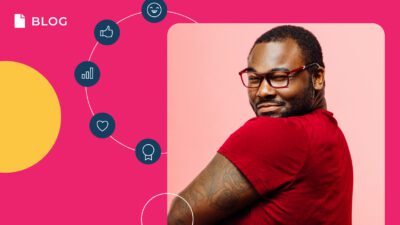
The Evolution Of Customer Success In The Digital Age
The role of Customer Success has undeniably been one of change in the last few years. With teams being downsized and CSMs being held accountable…
Check it out
Unleashing the Full Potential of Customer Success: A CSMs’ Perspective
As Customer Success enters its second decade, the industry has never been hotter. Organizations are seeing how the efforts of Customer Success professionals have a…
Check it out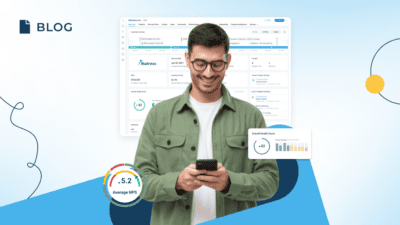
How Tricentis Uses AI for Customer Success and Support
What do Miley Cyrus and artificial intelligence have in common? Well, at times it can feel like deciding how you utilize the power of artificial…
Check it out
The Transformative Power of AI in B2B Software: Predictions From Denise Stokowski, SVP of Product, Gainsight
In case you missed it (somehow), Generative AI has taken the world by storm. In the realm of B2B software, Gen AI holds immense potential…
Check it out
How HoneyBook Scaled an Online Customer Community From Scratch With Gainsight
Building an online community for your customers isn’t as hard as you might think—in fact, it’s pretty simple to get started. For most businesses, you…
Check it out
The Future Is Now: How AI Powers Business
There's a palpable energy and intense focus on AI across all levels at Gainsight these days. Every month, a passionate group of Gainsters meet in-person…
Check it out
3 Tips for Developing Courses Your Customers Will Love
Kevin Costner's famous quote from Field of Dreams, “If you build it, he will come,” still inspires millions, but it doesn’t apply to your digital…
Check it out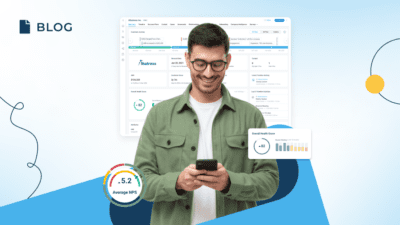
Transforming Customer Success Into a Revenue-Generating Powerhouse
This is a very exciting time to be in the Customer Success (CS) profession. As economies and customer expectations shift and evolve, we as CS…
Check it out
Scoring Big With Horizon AI: How Scorecard Optimizer Is Changing the Game for Customer Health and Team Wins
In the increasingly competitive digital landscape, customer success teams are the linchpins of retaining and expanding customer relationships. The key to their success lies in…
Check it out
How to Prove the ROI of Your Online Training Program
As a training or operations professional, you’ve probably faced plenty of questions regarding ROI (return on investment) from colleagues when evaluating an online learning initiative.…
Check it out
6 CS Leaders’ Predictions for the Future of Customer Success
In the dynamic landscape of Customer Success (CS), where relationships and outcomes intersect, the voices of female leaders are increasingly shaping the trajectory of the…
Check it out
Expanding Customer Success Through Partners
When it comes to building long-term scalability and efficiency for their businesses, more and more SaaS companies are turning to channel and ecosystem partners as…
Check it out
CS in the City: Meet the Trailblazers Transforming Customer Success
Imagine a warm October day in the bustling streets of New York, where four remarkable women stride down Fifth Avenue, laughter echoing in their wake.…
Check it out
Top 3 Use Cases for Online Customer Communities in 2024
This year more than ever, SaaS organizations are tasked with doing more with less, especially when it comes to parts of the business responsible for…
Check it out
How to Drive Adoption With Digital User Journeys
Well-defined customer touchpoints are the foundation of a strong digital experience with your product. As the SaaS industry evolves and gets more sophisticated, so do…
Check it out
Top Learnings From Gainsight University Data That Showcase the Business Impact of Customer Education
At Gainsight, we understand the vital role that customer education plays in driving sustainable growth and fostering strong relationships with our clients. That's why we've…
Check it out
Community Management Essentials: Dos and Don’ts for 2024 Success
In the dynamic landscape of community management, 2023 saw significant strides in redefining the role and impact of online customer communities for organizations. As we…
Check it out
Steering the Ship: Mapping Leadership and Goal-Setting for Customer Education
We're starting 2024 with a new webinar series jam-packed with best practices and strategic insights proven to help customer education teams get their programs off…
Check it out
Unlocking Customer Success with Channel and Ecosystem Partners
By Scott Salkin, SVP & GM, Gainsight CS and Asher Mathew, Co-Founder & CEO, Partnership Leaders In today’s world of shifting economic conditions, plummeting market…
Check it out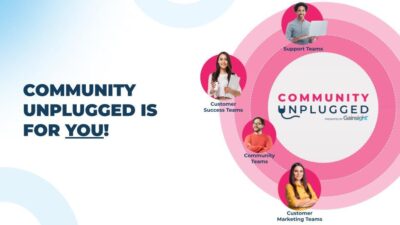
Join Us at Community Unplugged: Get Plugged Into What Powers Healthy Online Communities
Are you ready to unlock the potential of your customer community? Gainsight is thrilled to announce Community Unplugged - an immersive virtual event designed to…
Check it out
How to Align Customer Success With Revenue
In the ever-evolving landscape of SaaS, Customer Success (CS) teams are facing a paradigm shift. Once primarily focused on customer satisfaction and retention, CS teams…
Check it out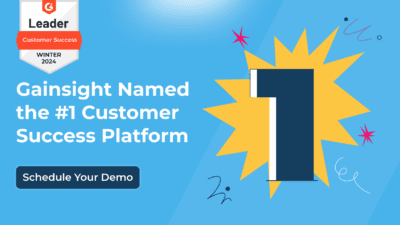
Gainsight Reigns Supreme: Winter 2024 G2 Grid Report Unveiled!
In the fast-paced world of Customer Success, staying ahead of the curve is non-negotiable. That's why here at Gainsight, we're beyond thrilled to share our…
Check it out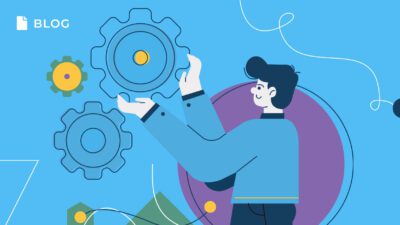
Customer Education & Training: The Investment That Keeps on Giving
The Customer Success landscape has changed. Technology companies are producing more complex software, which can often overwhelm customers during the onboarding process. As a result,…
Check it out
Why It’s Time to Slash Your Reliance on Manual Customer Training
Manual customer training, i.e., 1:1 sessions with Customer Success Managers (CSMs), PDFs, webinars, etc.—had its day. But it’s quickly falling out of favor, diminishing the…
Check it out
Community Manager Insights: A Conversation With Gainsight’s Own Community Management Team
Today is Community Manager Appreciation Day—recognizing the unsung heroes working behind the scenes to architect thriving, healthy communities that drive customer engagement and value. Gainsight…
Check it out
How Learning Is Transforming the CX Landscape
There’s more competition than ever. But, why? The cost of starting a business is lower than ever, products are commoditized, and markets are saturated, which…
Check it out
Customer Education Managers & Customer Success Managers: Who Does What?
Customer success is firmly entrenched in the SaaS business model. According to a 2020 study by TSIA, more than 90% of organizations had a dedicated customer…
Check it out
Community-Driven Impact: How to Prove and Improve Your Community’s Value
By now, the value proposition for a customer community is well-established. Having a community of people who use, improve, and advocate for your product will…
Check it out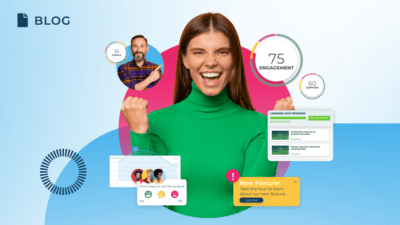
Popmenu’s Guide to Digital Customer Engagement
Digital innovation is constantly shaping customer relationships, and Popmenu stands out for how it’s using Gainsight Essentials for its customer engagement and growth strategies. Customer…
Check it out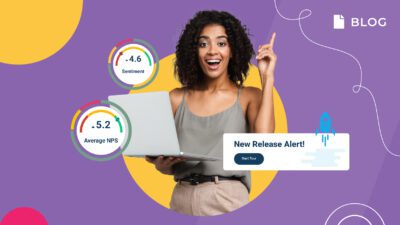
Pulse Europe 2023: How to Drive Proactive Customer Success When You’re an Early-Stage Company
For a long time, proactive vs reactive was a common debate among Customer Success professionals. Now, the verdict is in, and everyone agrees that proactive…
Check it out